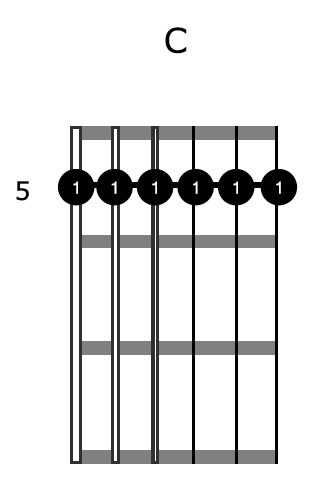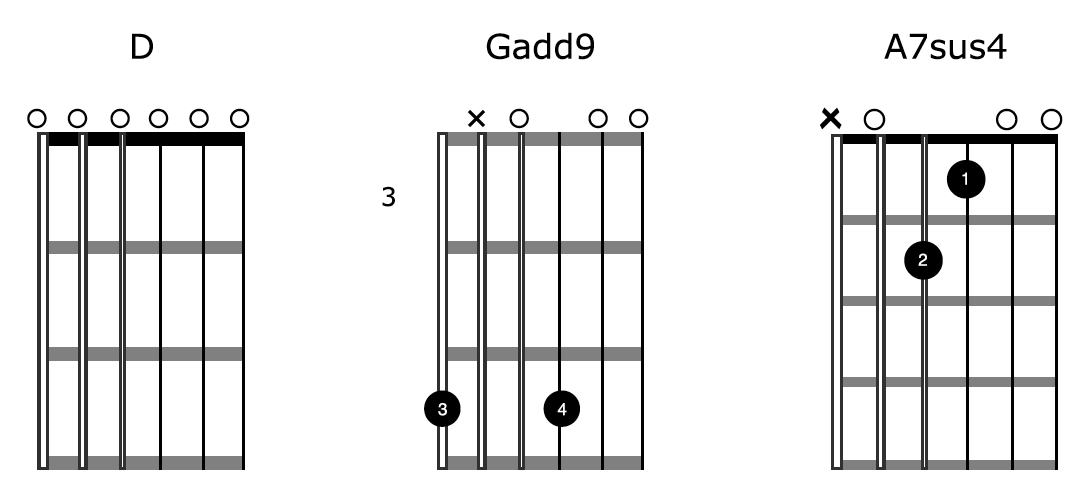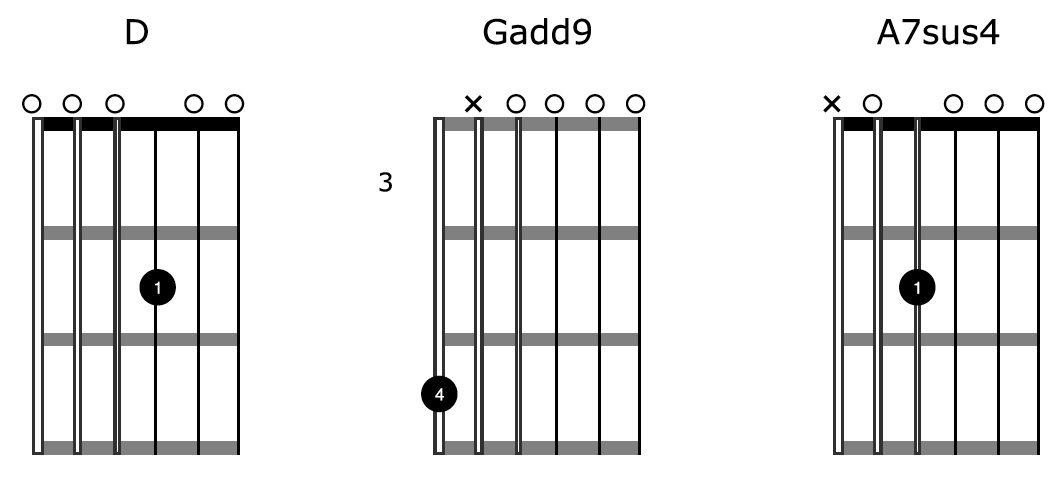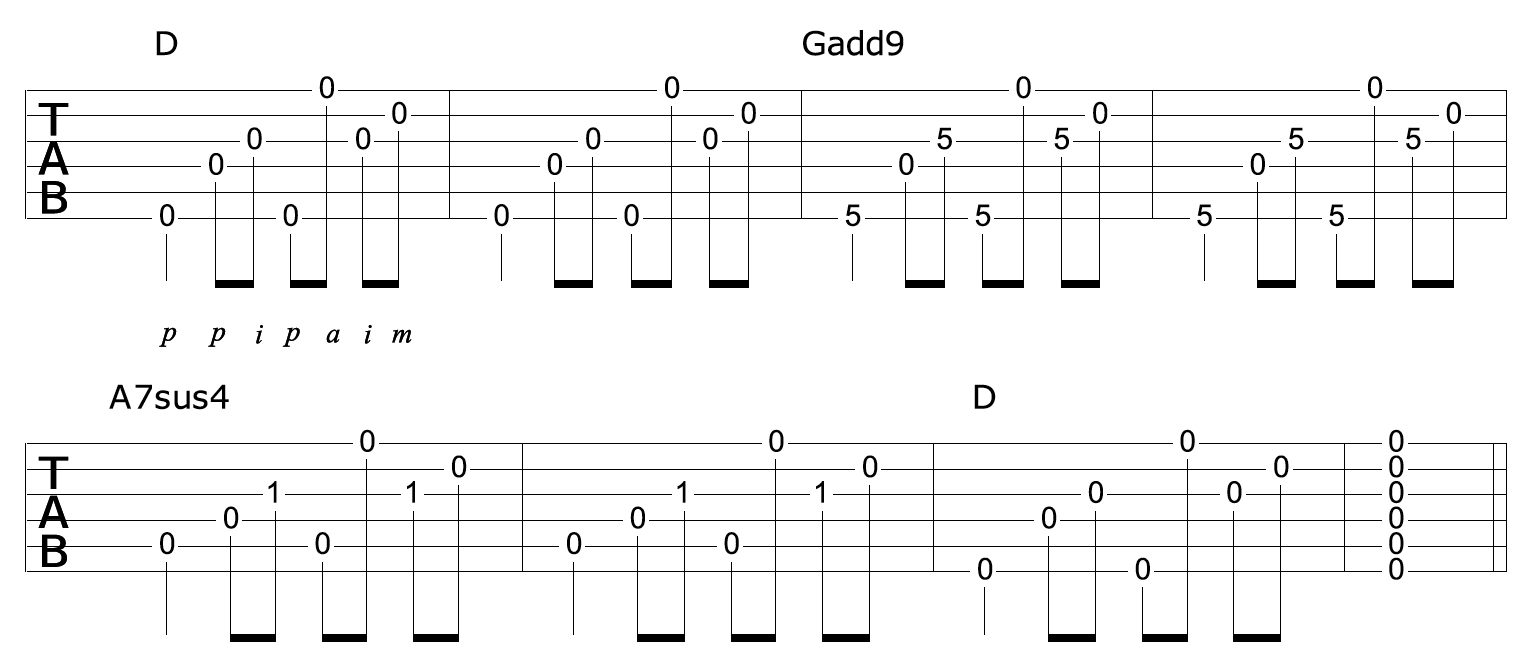5 Reasons Why You Should Play Guitar In Open Tunings
by Simon Candy
 Exploring open tunings on the acoustic guitar can unlock new levels of creativity and fun in your playing. Unfortunately, some people shy away from them, thinking they'll have to start from scratch or that it's too difficult. However, this is far from the truth.
Exploring open tunings on the acoustic guitar can unlock new levels of creativity and fun in your playing. Unfortunately, some people shy away from them, thinking they'll have to start from scratch or that it's too difficult. However, this is far from the truth.
In this article, I want to show you how easy and cool it is to incorporate open tunings into your playing, so you can sound great using them right away!
First a brief explanation. Open tunings refer to the act of modifying the tuning of specific strings on your guitar to produce a particular chord when all the strings are played open.
To illustrate, if I change the tuning of my guitar's 6th, 5th, and 1st strings to D, G, and D notes respectively, I would achieve an Open G tuning. This is because all the open strings will now produce notes from a G chord.
G chord = G B D
Open G tuning (low to high) = D G D G B D
* Bolded notes are the strings that have been altered from standard tuning
There are other types of tunings in addition to open including modal, instrumental, and dropped tunings. These all fall under the banner of “alternate tunings” for your guitar playing.
Let me share with you 5 things you must know about open tunings so you don’t miss out on the great sounds and nuances the acoustic guitar has to offer, and your playing has to benefit from, big time!
1. Open Tunings Does Not Equal Having To Learn How To Play Your Guitar All Over Again
 I used to avoid playing the guitar in open tunings for a very long time.
I used to avoid playing the guitar in open tunings for a very long time.
Why?
Because I believed that it was difficult enough to learn how to play guitar in standard tuning, and making adjustments to the strings would render everything I had learned useless. It felt like too much work, and I thought I would have to start from scratch again.
However, don't make the same mistake I did!
Learning guitar in a new tuning doesn't mean that the guitar techniques you have developed over time will disappear. It's not like starting from scratch.
Furthermore, many guitar tunings, like Open G, are closely tied to standard tuning. Specifically, in Open G, the 2nd, 3rd, and 4th strings retain their standard tuning positions:
Standard Tuning - E A D G B E
Open G Tuning - D G D G B D
This means a lot of the fretboard will still be familiar to you in an Open G tuning. In fact 50% of it remains unchanged.
Open tunings actually make a lot of things EASIER to play than if you were try them in standard tuning. They are designed to your advantage and without them, you are only realising a very small percentage of the guitar's potential.
For example, to play a bar chord in an open G tuning, you simply bar a single fret:

This single fret C bar chord allows you to do a blues shuffle pattern that would be quite awkward to do in standard tuning:

There is also the possibility of adding embellishments to your bar chords that would be at least very hard to do in standard tuning, if not impossible. Here is an example:

For more ways to play chords in One G tuning on guitar, see the video below. These chords are easy to play, often simpler than those in standard tuning, and produce a beautiful sound:
2. Playing In One Open Tuning Makes It Easier To Play In Other Open Tunings
Not only do open tunings often relate closely to standard tuning, they can also relate very closely to each other. This means by becoming familiar with one open tuning, you can also become fluent in another open tuning by making very minor and very simple adjustments.
For example check out how closely Open D tuning relates to DADGAD tuning:
Open D Tuning - D A D F# A D
DADGAD Tuning - D A D G A D
* DADGAD tuning is also known as Dsus4 tuning
These are 2 of the most commonly used open tunings on guitar and there is only one string/note difference between them. So anything you learn in an Open D tuning can very easily be adjusted and used in DADGAD tuning.
Take the following chords in Open D tuning for example:

To play these chords in DADGAD tuning you only have to change a single note in each chord:

This transfers across nicely when applying these chords in a progression. Compare the two progressions below to see how similar two open tunings can be.
• Open D tuning:

• DADGAD tuning:

3. You Can Sound Great Straight Away In Open Tunings! Let Me Show You How
As has already been stated, learning a bunch of different open tunings is not like having to learn your guitar all over again. This is an important point to make as it turns many people off even trying to play in open tunings, like it did to me.
On the contrary, if you have been playing guitar for a little while and have basic techniques down such as strumming, chord changes, etc., open tunings are often easier to play than standard tuning.
Open tunings are all about adjusting the tuning of your guitar to make it EASIER to play certain things, not harder.
How easy?
Well, let’s take DADGAD tuning as an example. Check this out:

The example above is very simple to play with a droning low D string throughout while playing a simple melody on the top string. You could easily improvise using this idea. Natural harmonics sound great in DADGAD tuning too as you can hear at the end of this example.
Watch the video below to discover three different ways to play your guitar in DADGAD Tuning. The video will teach you how to play both chords and melodies in this tuning, as well as some unique and impressive tricks that are only possible with DADGAD Tuning:
4. Learning Dropped D Tunings Makes It Easier To Learn Open Tunings
Drop D tuning is a type of alternate tuning for your guitar. It involves dropping either your low, bottom E string down to a D note, or your top E string to a D. While dropping your 6th string down is the more common of the two, they both serve as a very effective way to ease into open tunings.
Notice that Open G, Open D, and DADGAD tuning, 3 of the most commonly used tunings on guitar, all have D notes on the 6th and 1st strings. By becoming familiar with drop D tunings, you would then only need to make slight adjustments when moving to any of these 3 tunings.
So, if you prefer, experiment with these drop tunings first and you will find it even easier to make the transition across to open tunings.
If you're serious about playing in open tunings on guitar, check out the video below.
Following a specific order can greatly simplify the process and make it easier to navigate the world of open tunings:
5. Open Tunings Can Be Symmetrical, Making Things Very Easy To Play
While we have focused on Open G, Open D, and DADGAD tuning for this article, there are many other open tunings to consider when it comes to your acoustic guitar playing.
Many of these tunings make things like scale runs and licks very symmetrical, and thus very easy to play.
Take Open C tuning for example:
Csus2 Tuning - CGCGCD
As you can see, this is a particularly symmetrical tuning, as lot of open tunings are.
Scale runs become particularly easy to not only to play but improvise with in tunings like this. Here are a couple of ideas for you to get started with:


Play around with these ideas and see for yourself how easy it really is to create stuff with them on the spot and sound great! Using a backing track in C would be a good idea while doing so, to give you some context.
By disregarding open tunings, as a guitar player, you are missing out on a lot of potential. Contrary to popular belief, they are not difficult or intimidating to learn. You can choose to incorporate a few tunings in your playing or explore a variety of them extensively.
The choice is yours!
Check out this free downloadable ebook/audio and learn on a much deeper level how to play your guitar in DADGAD tuning and take your playing to the next level.